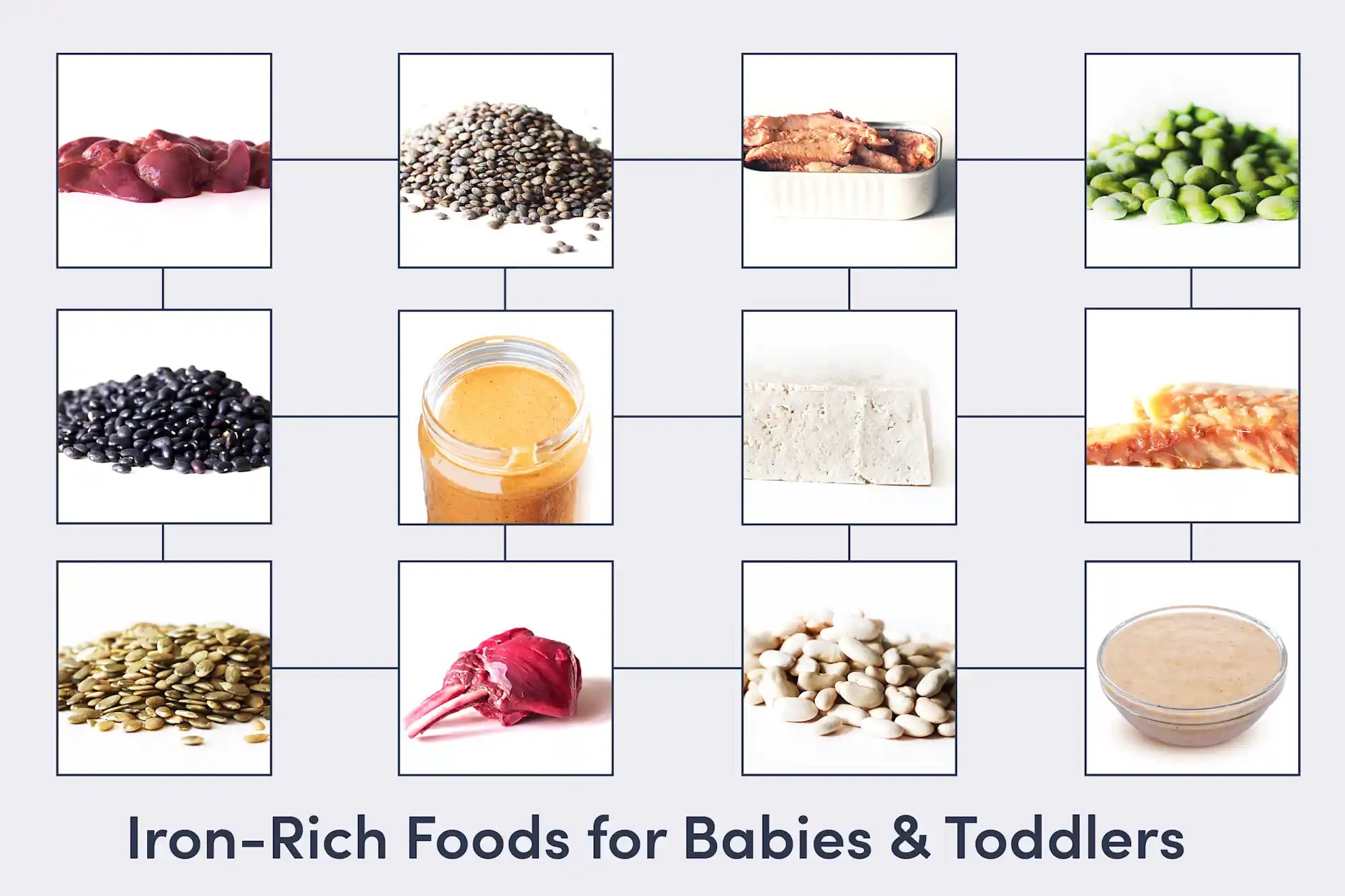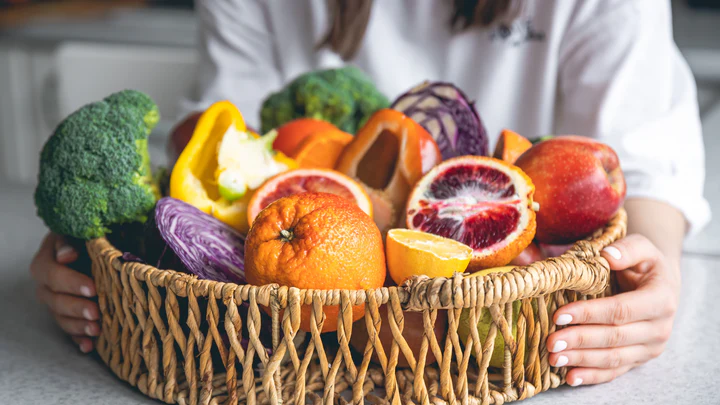Introducing your baby to solid foods is an exciting journey filled with new tastes and experiences. It’s important to focus on nutrition during this stage, as it significantly influences their growth and development.
As you embark on this weaning adventure, consider exploring various nutritious options that can boost your little one’s iron stores.
Pureed meats and legumes can be delightful additions to their diet, offering gentle options that are kind to tiny tummies.
Pairing these nutritious choices with vitamin C sources, like vibrant fruits and veggies, can enhance iron absorption, making mealtime even more beneficial. A sprinkle of creativity in your food prep can turn every meal into a fun experience for both you and your baby, especially when incorporating iron-rich sources to support their weaning journey and ensure optimal infant nutrition!
Here is our summary table to save you time:
| Food | Type of Iron | Iron Content | Recommended Age | Best Ways to Serve | Additional Benefits |
|---|---|---|---|---|---|
| Lentils | Non-heme | ~3 mg per ½ cup (cooked) | 6+ months | Pureed or mashed with veggies | High in fiber and protein |
| Chickpeas | Non-heme | ~2.4 mg per ½ cup (cooked) | 6+ months | Mashed or blended into hummus | Good for gut health |
| Tofu | Non-heme | ~3 mg per ½ cup | 6+ months | Cubed, mashed, or blended into purees | Rich in calcium and protein |
| Egg Yolk | Heme & Non-heme | ~0.5 mg per yolk | 6+ months | Scrambled, mashed, or mixed into porridge | Contains choline for brain health |
| Beef (Minced or Pureed) | Heme | ~2 mg per ounce | 6+ months | Cooked, finely minced, or pureed | High in protein and zinc |
| Chicken (Dark Meat) | Heme | ~1 mg per ounce | 6+ months | Shredded, minced, or blended into purees | Easy to digest |
| Salmon | Heme | ~0.7 mg per 3 oz | 6+ months | Flaked and mixed with veggies | Rich in Omega-3s |
| Quinoa | Non-heme | ~1.5 mg per ½ cup (cooked) | 8+ months | Cooked and mixed with fruit/veggies | Complete protein |
| Spinach | Non-heme | ~0.8 mg per ¼ cup (cooked) | 6+ months | Pureed and added to meals | High in vitamin A |
| Sweet Potatoes | Non-heme | ~0.6 mg per ½ cup (cooked) | 6+ months | Mashed or blended into purees | Rich in beta-carotene |
| Broccoli | Non-heme | ~0.5 mg per ½ cup (cooked) | 6+ months | Steamed and mashed or cut into small florets | High in vitamin C to boost iron absorption |
| Pumpkin Seeds | Non-heme | ~4.2 mg per ounce | 9+ months | Ground into a fine powder and mixed into meals | Rich in zinc and magnesium |
| Black Beans | Non-heme | ~1.8 mg per ½ cup (cooked) | 8+ months | Mashed or mixed with veggies | Good source of fiber |
| Peas | Non-heme | ~1 mg per ½ cup (cooked) | 6+ months | Mashed or mixed with cereals | Good source of vitamin C |
| Fortified Infant Cereal | Non-heme | ~5-7 mg per serving | 6+ months | Mixed with breast milk or formula | Easy to digest and absorb |
Importance Of Iron In Infant Nutrition
Focusing on your baby’s dietary needs is key to their overall health and development. Adequate iron consumption plays a significant role in their growth, supporting not just physical stature but also cognitive abilities.
Infants thrive on this mineral, as it aids in brain development, keeping those little minds quick and curious.
A fantastic way to introduce iron into their meals is through pureed meats, which pack a punch of this nutrient.
It’s interesting to note that breastfed babies have different requirements compared to those on formula.
Understanding how much iron your little one needs during those first months is vital. Keep an eye out for signs of deficiency, like unusual fatigue or irritability, and always consult your pediatrician with any worries.
Introducing iron-rich foods around the six-month mark can truly set your baby up for success, especially with options like pureed meats, lentils, spinach, quinoa, and fortified cereals.
Best Iron Sources For Baby Food
When feeding your little one, selecting iron-rich options can greatly support their growth. Try incorporating poultry, like finely ground chicken or turkey, into their meals.
These choices are not just delicious but also packed with iron.
If your family prefers plant-based meals, beans and peas can work wonders.
Pureeing them creates a smooth texture that even the pickiest eaters find appealing. Don’t overlook iron-rich vegetables such as cooked spinach or sweet potatoes; they mix effortlessly into various dishes, enhancing the overall nutrition.
Balancing these foods during this stage sets the foundation for healthy eating habits.
How To Introduce Weaning Foods?
Embarking on the journey of introducing solids to your baby is exciting—think of it as a delightful adventure into a whole new world of flavors! As you start to explore weaning foods, leafy greens are a fantastic option. These vibrant veggies are not just packed with nutrients but also offer a wonderful base for your little one’s meals.
Mixing them with a bit of vitamin C can really help with iron absorption, making those first bites even more beneficial.
Purees are a great starting point to ease your baby into various food textures.
As your child tastes new flavors, take your time and observe their reactions. Keeping a food diary can be super helpful for tracking what they enjoy and what seems less appealing. After all, the goal is to create a joyful and engaging experience for both of you through exploring diverse food textures that enhance iron absorption by pairing leafy greens with vitamin C-rich foods, or considering supplementation when needed!.
Nutritional Needs During Growth Stages
Every phase of your child’s journey brings unique challenges and delights, especially when it comes to meals. As little ones develop, their bodies and brains require specific nutrients to thrive.
During this time, dietary iron needs ramp up significantly, making it important to pay close attention to their intake.
Iron is a superstar nutrient for brain development, and catching any signs of deficiency early on can make a real difference.
Soft foods are fantastic for tiny mouths just getting the hang of chewing, and they still deliver a hearty dose of nutrition. When it’s time to dive into solids, consider offering iron-fortified options and scrumptious mashed foods.
These choices not only support their growing bodies but also add a little excitement to mealtime.
Nutritional Needs for Children
- Iron is crucial for brain development, especially in infants and toddlers.
- Dietary iron needs increase significantly during early childhood.
- Iron deficiency in young children can lead to developmental delays and cognitive issues.
- Iron-fortified foods and soft, nutritious options can enhance mealtime enjoyment while meeting dietary needs.
Recipes For Iron-Rich Pureed Meats
Cooking for your little one can be a delightful adventure filled with color and flavor. These pureed meat recipes not only cater to their nutritional needs but also introduce an array of tastes that can make mealtime exciting.
Each dish is quick to prepare, ensuring that you can whip up something nutritious without any fuss.
Simple Chicken Puree
- Ingredients: Boneless chicken breast, chicken broth, and a touch of olive oil.
- Preparation: Poach the chicken, blend with broth until smooth, and serve warm.
- Tip: Adding herbs can enhance flavor without overpowering, making it a great choice for meeting meal planning guidelines.
The comprehensive approach ensures that families receive essential nutrition guidelines, healthcare resources, pediatric advice, and effective meal planning to meet their children’s nutritional needs.
Benefits Of Leafy Greens And Lentils
Have you ever thought about how adding a bit of green and some legumes can bump up your baby’s meals?. Leafy greens like spinach and kale are bursting with vitamins and iron, making them fantastic iron-rich snacks for growing babies.
Lentils, on the other hand, deliver a wonderful source of protein and fiber, which can really aid digestion.
Incorporating these safe foods into your baby’s diet not only helps nourish them but also encourages healthy eating habits from an early age. Mixing them together creates a delightful food variety that keeps mealtime both exciting and nutritious, especially when incorporating iron-rich snacks and safe foods suitable for infants to promote healthy eating habits.
Baby Nutrition
- Leafy greens like spinach and kale are rich in vitamins A, C, and K, as well as iron, essential for a baby’s growth.
- Lentils provide a high-quality source of protein and fiber, which supports healthy digestion in infants.
- Introducing a variety of safe foods early on helps establish positive eating habits that can last a lifetime.
- Combining greens and legumes can create flavorful meals that keep infants engaged and encourage adventurous eating.
Enhancing Iron Absorption With Vitamin C
Pairing iron-rich foods with vitamin C can transform your mealtime experience. Iron plays a vital role in your body, and it comes in two varieties: heme, which you get from animal protein sources, and non-heme, found in plants.
To boost the absorption of non-heme iron, you’ll want to include vitamin C in your meals.
So, when you’re savoring a dish of lentils or a vibrant spinach salad, consider adding a side of fresh bell peppers or a hint of citrus.
These delightful combinations not only enhance flavor but also support healthy growth and development. Why not explore delicious recipes that combine these nutrients for a satisfying and nutritious feast? As you plan your meals, mixing these elements will keep your diet balanced and full of variety.
Meal Planning For Balanced Diet And Variety
Getting organized with your meals can offer a refreshing way to meet your nutrition goals while keeping things exciting. You might be surprised at how much fun it can be to experiment with different cooking methods.
Start by filling your plate with colorful foods.
Incorporating a range of fruits and vegetables not only enhances dietary diversity but also adds exciting flavors.
You know what’s really fun? Making finger foods! They can be a hit, especially with kids! Keep it interesting by choosing a weekly theme, like Taco Tuesday, to spice things up. A little creativity goes a long way in adding texture progression to your meals.
Planning ahead makes it easier to enjoy nutritious meals all week long, while ensuring your taste buds are always excited.
Meal Organization
- Meal planning can reduce food waste by ensuring you buy only what you need.
- Eating a variety of colorful fruits and vegetables can provide essential vitamins and minerals.
- Engaging children in meal preparation can encourage healthy eating habits.
- Themed meals can make dining more enjoyable and foster family bonding.
Conclusion
Thinking about how to introduce new foods to your little one can be quite the adventure, as their early food experiences can really shape their taste preferences down the line. Offering homemade baby food allows you to experiment with flavors and ingredients, which can be fun and engaging for both of you.
Opting for organic options can give you reassurance about the quality of what they’re consuming.
It’s also important to keep allergy considerations in mind when trying out new items on their plate, as some fruits or veggies might not sit well with them.
Focusing on a balanced diet during this stage is key, so don’t shy away from mixing it up with different textures and tastes. And if your baby turns their nose up at something, don’t stress! Sometimes it just takes a little time and a few more tastes before they come around to enjoying those new flavors.
Originally posted 2025-01-11 12:29:49.





